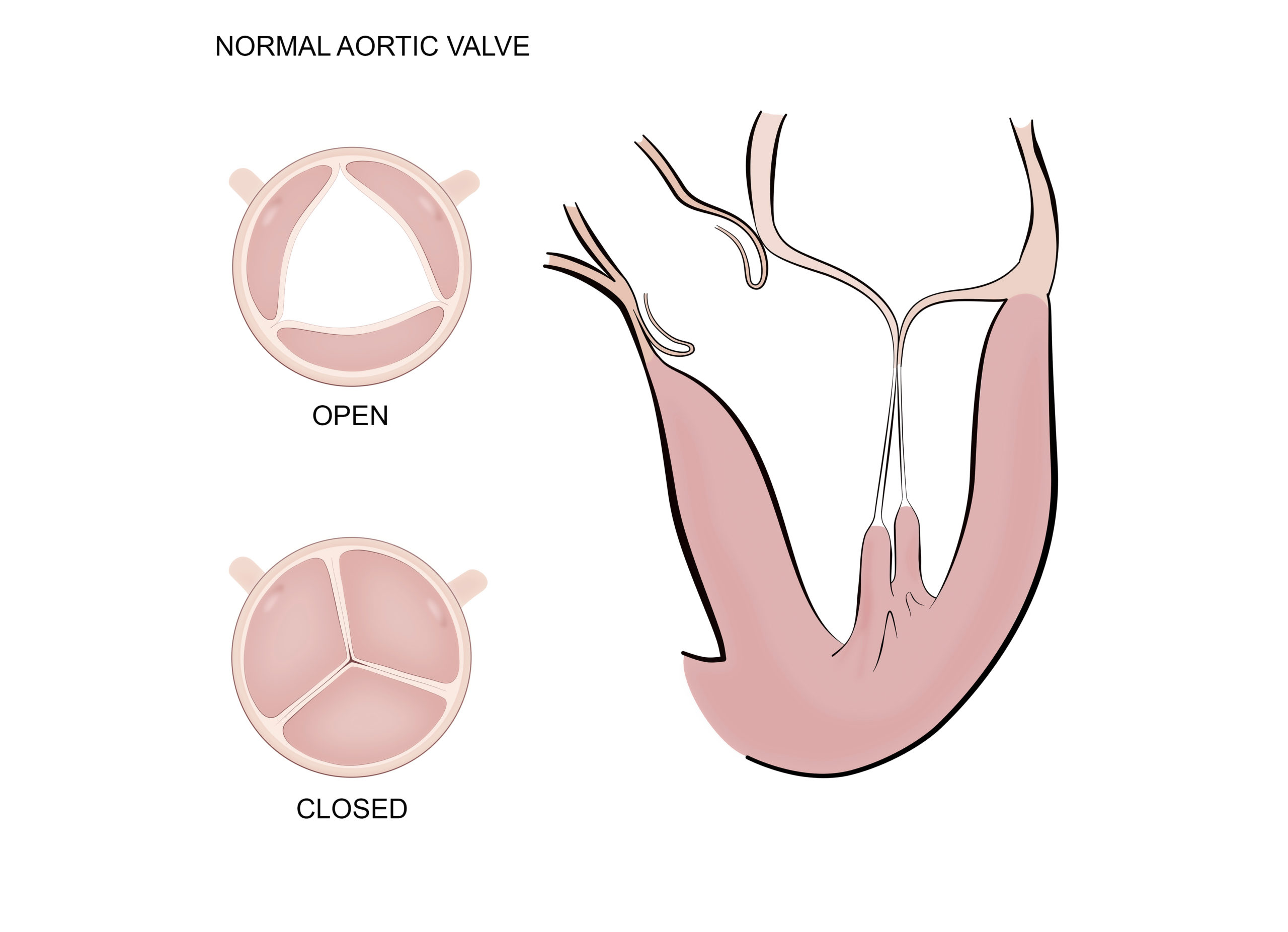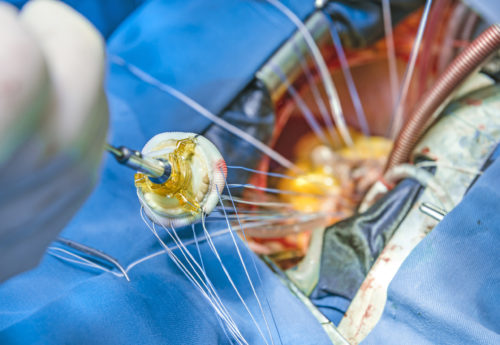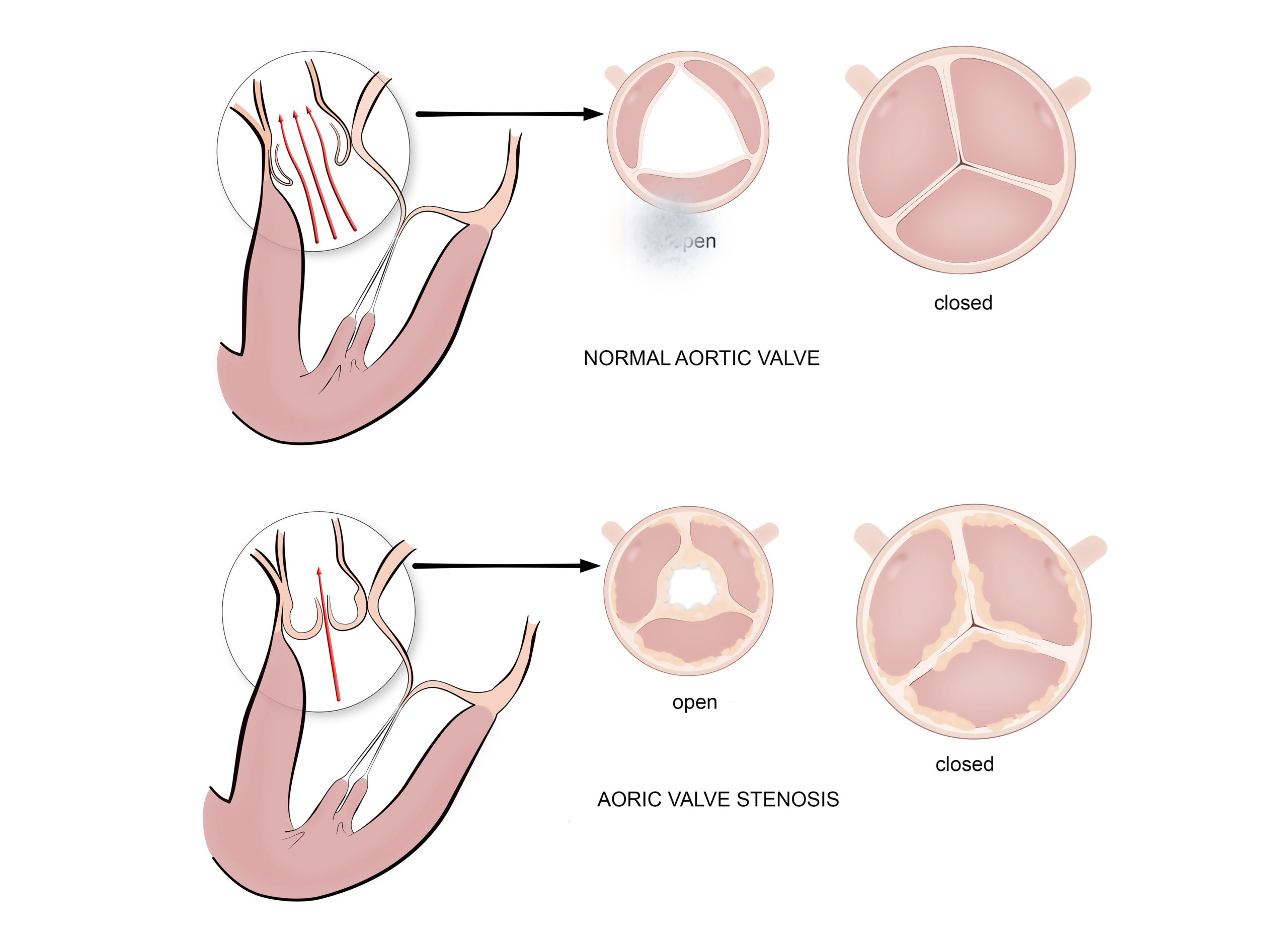The aortic valve is a tree-leaflet fibrous tissue structure between the left ventricle and the aorta. The aortic valve opens during the heart contraction, and closes during the relaxation phase, providing unidirectional aortic blood flow.

AORTIC STENOSIS
Aortic stenosis is the most common disease of the aortic valve. Tissue degeneration during the years is reducing the valve leaflets’ mobility and therefore leads to stenosis. The myocardium is getting hypertrophic while pumping the blood through a smaller valve orifice. That is why patients are experiencing the long asymptomatic period despite the significant stenosis. Meanwhile, the heart is getting tired end eventually starts to fail. At the time of the symptom’s onset, some degree of the myocardial dysfunction already exists. Presence of the systolic heart murmur on the second left intercostal space and the following symptoms are clinical signs of the aortic stenosis:
- Syncope – sudden loss of consciousness
- Chest angina
- Heart insufficiency – effort dyspnea or orthopnea
These symptoms are clear signs of advanced aortic valve disease. If not treated, the life expectancy at that point is up to five years, or even less in the presence of heart failure.
AORTIC VALVE REGURGITATION - INSUFFICIENCY
Aortic valve insufficiency or regurgitation is a valve inability to close properly. Blood regurgitate from the aorta back into the heart, resulting in left ventricle overload, dilatation, and eventually failure. The aortic regurgitation could be isolated or present altogether with the ascending aorta dilatation or aneurism. Surgery is a treatment of chaise and gold standard as well. A faulty valve could be replaced or even better repaired if possible.
The new onset of the aortic insufficiency accompanied by a fever is highly suspicious of valve infection. That is bacterial endocarditis, a severe condition that requires hospitalization, antibiotics, and valve replacement eventually. Acute aortic regurgitation accompanied by severe chest pain, the patient probably has an aortic dissection. That is a medical emergency that requires immediate surgery to prevent the fatal aortic rupture.
AORTIC VALVE REPLACEMENT
Heart valve diseases are the real mechanical problem, and therefore the surgery is the only option. Valve could be replaced with either mechanical or biological prosthesis. Mechanical ones have unlimited durability but demand lifetime anticoagulation therapy. The biological prosthesis is tissue valves and, therefore, less durable, but lifetime anticoagulation therapy is unnecessary. Medical treatment is only symptomatic and could not affect the condition itself.
The most reasonable and practical surgical option in aortic valve disease is the reconstructive surgery, if possible. It is almost impossible to repair aortic valve stenosis. Reconstructive surgery, therefore, is performed mainly for the aortic insufficiency.

Visoko rizični bolesici sa obolelim aortnim zalistkom često imaju neprihvatljiv operativni rizik. Terapijska opcija za ove bolesnike je interventna procedura ugradnje aortnog zalistka. To je ugradnja zalistka putem posebnog sistema žica i katetera koja uglavnom ne zahteva veću hiruršku intervenciju, TAVI procedura. Mana ove procedure je visoka smrtnost i visok nivo komplikacija. U našoj zemlji ova procedura se još uvek ne primenjuje.
TAVI
TAVI or transcatheter Aortic Valve Implantation is a procedure of transcatheter aortic valve replacement. Catheters are placed through the femoral artery and introduced into the heart. We have to dilate the valve with a balloon first and, after that to introduce and implant new tissue prosthesis. TAVI is a treatment of choice for older and high-risk patients with aortic stenosis. Good results in this high-risk group encourage TAVI in intermediate-risk patients.

